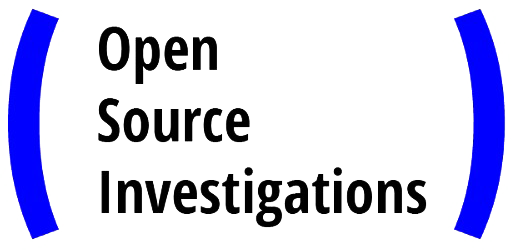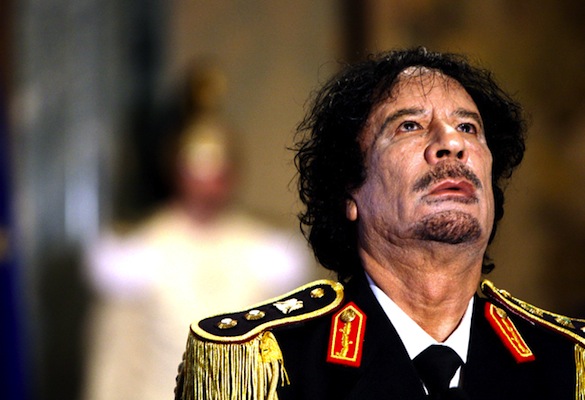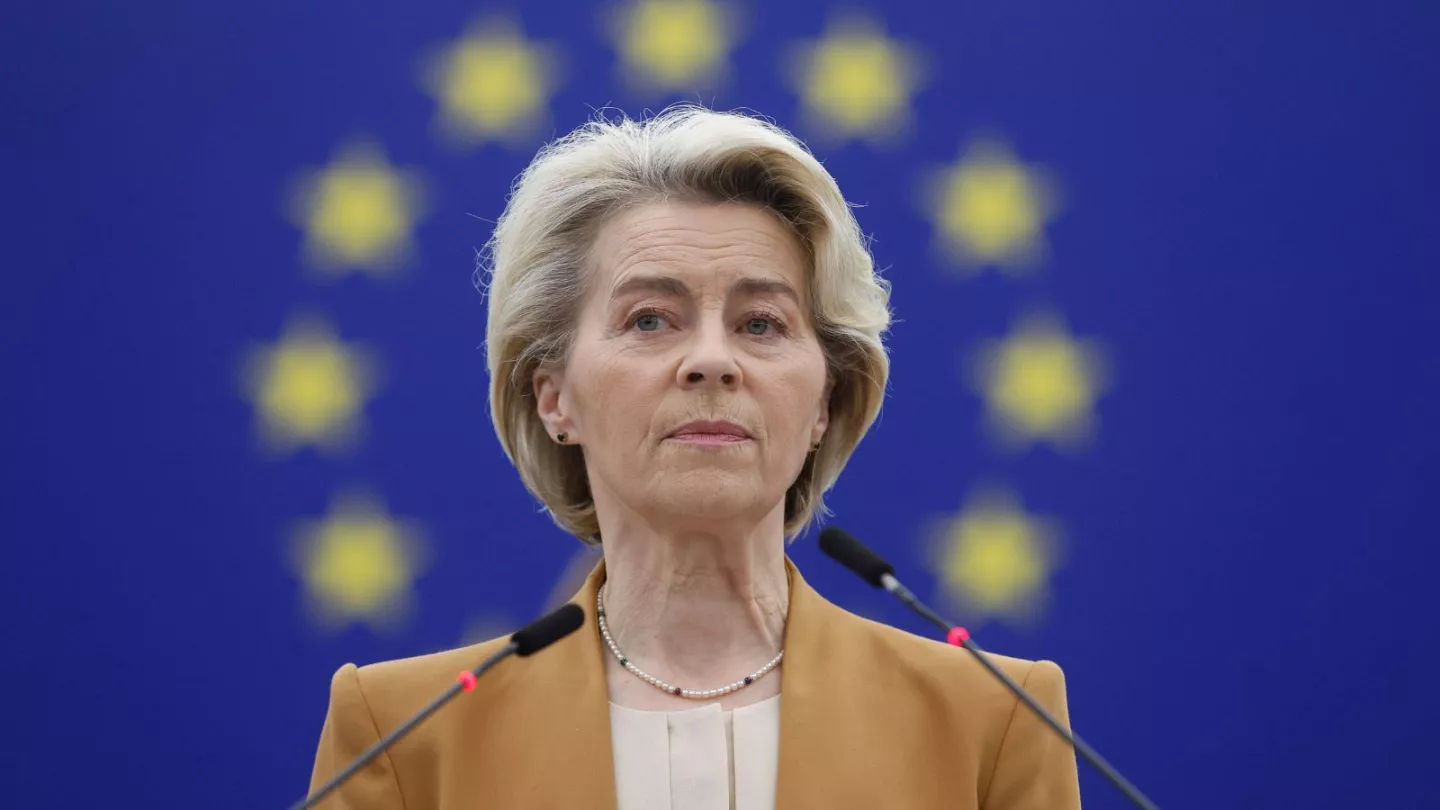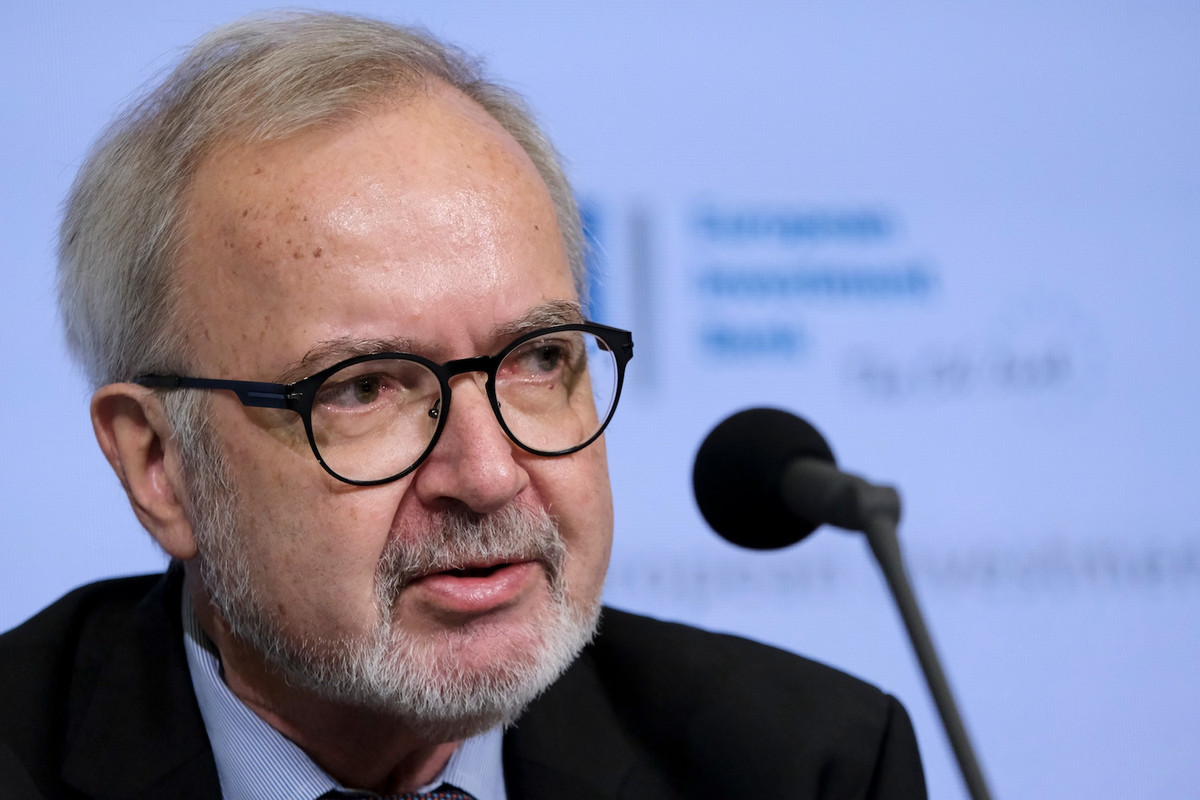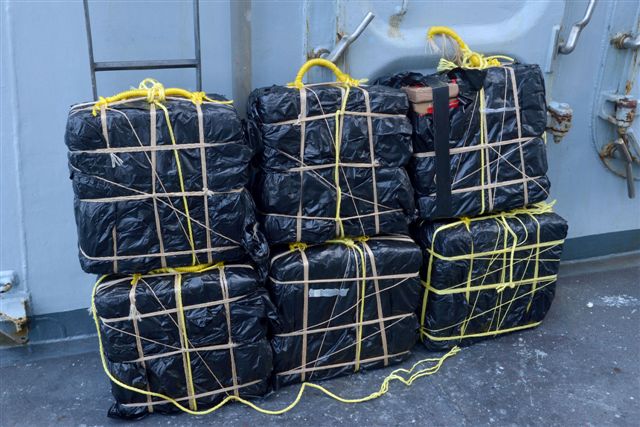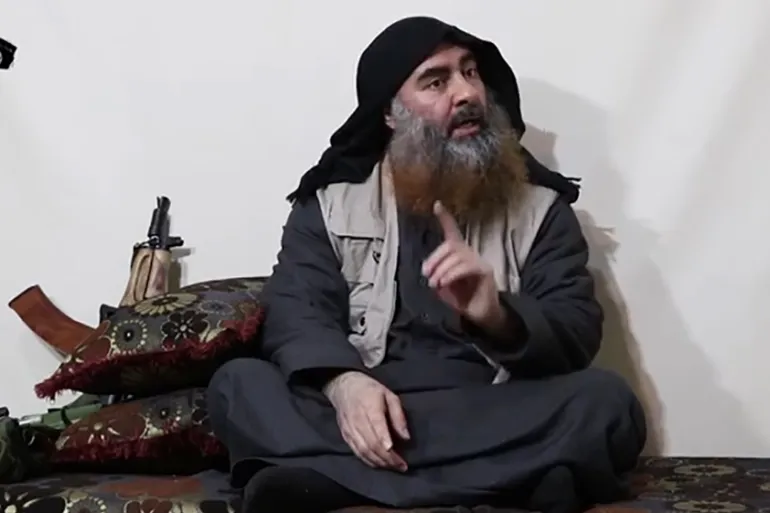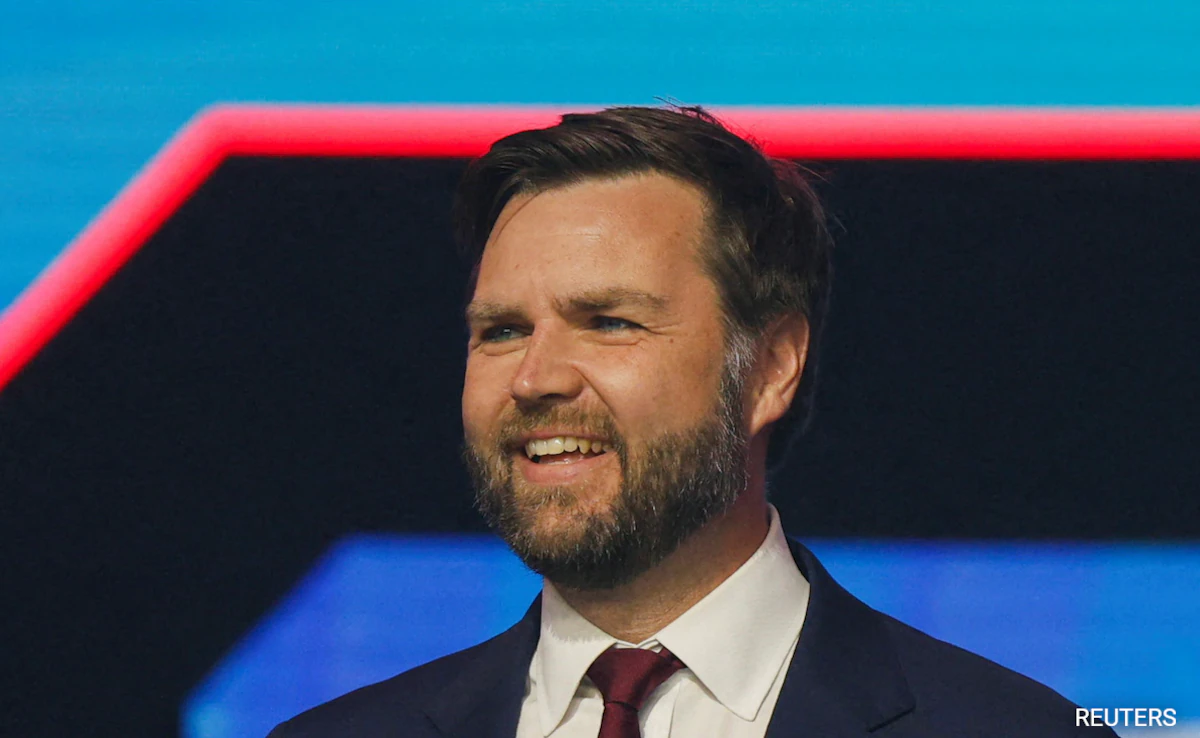As history has shown us, nobody really cares about the Middle East and the people that inhabit that area. It’s all about geopolitics and interests and you can usually see that if you follow the trail of money that the Western democracies leave behind after they intervene in „failed” countries, such as Libya. The fact is that the average citizen does not give a damn about the truth - he is merely driven only by emotions, fueled by the media-apparatus that has been feeding him lies for most of his life. Be it Syria, Libya, Irak, Afghanistan, Tunisia, the outcome is always the same: democracy has to be imposed, the local leaders are ruthless dictators that oppress the local population, foreign intervention is a necessity.
Let’s take Libya, for example. The fourth largest country in Africa, located in the Maghreb region, home to more than 6 million people, according to the 2006 official census. A country that was ruled between 1969 and 2011 by Muammar Gaddafi, a man better known for his weird behaviors and his female-only bodyguard corps. Libya’s system of governance during the Jamahiriya (governance structure established by Gaddafi that was officialy referred to as „direct democracy”) was based on Gaddafi’s theories outlined in his „The Green Book”, published in 1975. Let’s see what some of the principles dictated in „The Green Book” and what Gaddafi managed to achieved during his rule:
1. In Libya, a home is considered a natural human right („The house is a basic need of both the individual and the family, therefore it should not be owned by others”)
2. Education and medical treatment were all free – under Gaddafi’s reign, Libya could boast one of the best healthcare services in the Arab and African world; if a Libyan citizen could not access the desired educational course or correct medical treatment in Libya, they were funded by the State to go abroad.
3. Gaddafi carried out the world largest irrigation project – in order to make water readily available to all Libyan’s across the entire country.
4. Citizens were encouraged to start a farming business, with the Government supplying them with a house, farm land and live stock and seeds – everything free of charge
5. Mothers with newborn babies were given US $5000 as a bursary from the State
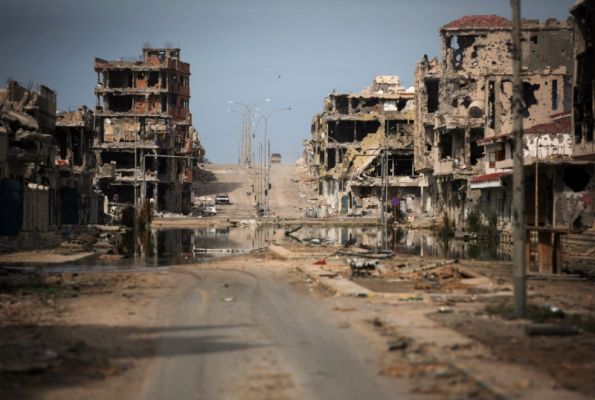 6. Electricity was completely free for all citizens
7. Cheap petrol – during Gaddafi’s reign, the price of petrol in Libya was as low as US $0.14/litre
8. Education for all – before Gaddafi, only 25% of Libyans were literate. Under his rule, the figure rose up to 87%, with 25% earning university degrees.
9. Libya had it’s own state bank, owned by the state – meaning that they were able to give loans to citizens at zero percent interest by law and they had no external debt at all.
Does this sound to you as a failed country with a leader that oppressed most of its citizens? From 1977 onward, per capita income in the country rose to more than US $11.000, the fifth-highest in Africa, while the Human Development Index became the highest in Africa and greater than that of Saudi Arabia. All of this was achieved without borrowing any foreign loans, keeping thus Libya completely debt free. Focus on the term „debt free” and you might find yourself wondering why Libya was considered by the US and its allies as a potential target for foreign intervention.
Fast forward a bit to 2011, at the start of the Libyan Civil war. Before the fall of Tripoli, Gaddafi was trying to introduce a single African currency made of gold, a currency that would have potentially challenged the petro-dollar based exchange market in all of Africa and the Middle East. Gaddafi wanted to introduce and trade only in the African gold Dinar, a move that would have thrown the world economy into chaos, given the complete hegemony of the American dollar when it comes to foreign transactions. The Dinar was widely opposed by the elites for a simple reason: African nations would have finally had the power to bring themselves out of debt and poverty and trade only in this particular currency, bringing to an end external exploitation that was prevalent ever since the colonial powers.
6. Electricity was completely free for all citizens
7. Cheap petrol – during Gaddafi’s reign, the price of petrol in Libya was as low as US $0.14/litre
8. Education for all – before Gaddafi, only 25% of Libyans were literate. Under his rule, the figure rose up to 87%, with 25% earning university degrees.
9. Libya had it’s own state bank, owned by the state – meaning that they were able to give loans to citizens at zero percent interest by law and they had no external debt at all.
Does this sound to you as a failed country with a leader that oppressed most of its citizens? From 1977 onward, per capita income in the country rose to more than US $11.000, the fifth-highest in Africa, while the Human Development Index became the highest in Africa and greater than that of Saudi Arabia. All of this was achieved without borrowing any foreign loans, keeping thus Libya completely debt free. Focus on the term „debt free” and you might find yourself wondering why Libya was considered by the US and its allies as a potential target for foreign intervention.
Fast forward a bit to 2011, at the start of the Libyan Civil war. Before the fall of Tripoli, Gaddafi was trying to introduce a single African currency made of gold, a currency that would have potentially challenged the petro-dollar based exchange market in all of Africa and the Middle East. Gaddafi wanted to introduce and trade only in the African gold Dinar, a move that would have thrown the world economy into chaos, given the complete hegemony of the American dollar when it comes to foreign transactions. The Dinar was widely opposed by the elites for a simple reason: African nations would have finally had the power to bring themselves out of debt and poverty and trade only in this particular currency, bringing to an end external exploitation that was prevalent ever since the colonial powers.
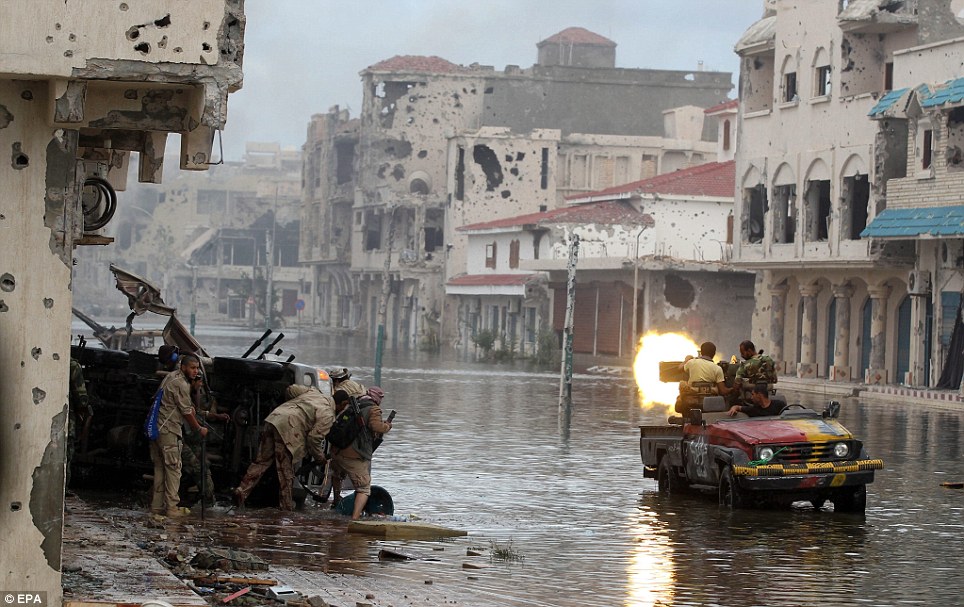 What happened next? A NATO intervention that destabilized the country completely, deposed Gaddafi and ultimately killed him in via the same armed rebels that would later on become affiliated with ISIS. A nation in ruins that has been involved in a civil war ever since 2011. A so-called „Arab spring revolution” that was nothing else but a foreign coup d’etat that ultimately supported the local rebels that wanted a grab of power for their own interests. Sounds familiar? Look at Syria and the similarities and you might be surprised of the implications that the US has in all of these so-called peaceful revolutions. Ever since the NATO intervention and the end of Gaddafi’s reign, Libya has been torn among numerous rival, armed militias and lately, ISIS. A power struggle that will have no end.
I’ll leave you with two direct quotes from Gaddafi, prior to his fall - two quotes that reverberate strongly with the current geopolitical mess that Europe has found itself into in the present time:
„There are millions of blacks who could come to the Mediterranean to cross to France and Italy, and Libya plays a role in security in the Mediterranean” – Gaddafi’s France 24 television address
„Libya may become the Somalia of North Africa, of the Mediterranean. You will see the pirates in Sicily, in Crete, in Lampedusa. You will see millions of illegal immigrants. The terror will be next door” – Gaddafi’s address
Sources for the information posted above regarding the military intervention in Libya (take note, the sources come from declassified official documents from the United States of America):
http://www.foreignpolicyjournal.com/…/new-hillary-emails-r…/
http://thefreethoughtproject.com/declassified-emails-revea…/
What happened next? A NATO intervention that destabilized the country completely, deposed Gaddafi and ultimately killed him in via the same armed rebels that would later on become affiliated with ISIS. A nation in ruins that has been involved in a civil war ever since 2011. A so-called „Arab spring revolution” that was nothing else but a foreign coup d’etat that ultimately supported the local rebels that wanted a grab of power for their own interests. Sounds familiar? Look at Syria and the similarities and you might be surprised of the implications that the US has in all of these so-called peaceful revolutions. Ever since the NATO intervention and the end of Gaddafi’s reign, Libya has been torn among numerous rival, armed militias and lately, ISIS. A power struggle that will have no end.
I’ll leave you with two direct quotes from Gaddafi, prior to his fall - two quotes that reverberate strongly with the current geopolitical mess that Europe has found itself into in the present time:
„There are millions of blacks who could come to the Mediterranean to cross to France and Italy, and Libya plays a role in security in the Mediterranean” – Gaddafi’s France 24 television address
„Libya may become the Somalia of North Africa, of the Mediterranean. You will see the pirates in Sicily, in Crete, in Lampedusa. You will see millions of illegal immigrants. The terror will be next door” – Gaddafi’s address
Sources for the information posted above regarding the military intervention in Libya (take note, the sources come from declassified official documents from the United States of America):
http://www.foreignpolicyjournal.com/…/new-hillary-emails-r…/
http://thefreethoughtproject.com/declassified-emails-revea…/
 6. Electricity was completely free for all citizens
7. Cheap petrol – during Gaddafi’s reign, the price of petrol in Libya was as low as US $0.14/litre
8. Education for all – before Gaddafi, only 25% of Libyans were literate. Under his rule, the figure rose up to 87%, with 25% earning university degrees.
9. Libya had it’s own state bank, owned by the state – meaning that they were able to give loans to citizens at zero percent interest by law and they had no external debt at all.
Does this sound to you as a failed country with a leader that oppressed most of its citizens? From 1977 onward, per capita income in the country rose to more than US $11.000, the fifth-highest in Africa, while the Human Development Index became the highest in Africa and greater than that of Saudi Arabia. All of this was achieved without borrowing any foreign loans, keeping thus Libya completely debt free. Focus on the term „debt free” and you might find yourself wondering why Libya was considered by the US and its allies as a potential target for foreign intervention.
Fast forward a bit to 2011, at the start of the Libyan Civil war. Before the fall of Tripoli, Gaddafi was trying to introduce a single African currency made of gold, a currency that would have potentially challenged the petro-dollar based exchange market in all of Africa and the Middle East. Gaddafi wanted to introduce and trade only in the African gold Dinar, a move that would have thrown the world economy into chaos, given the complete hegemony of the American dollar when it comes to foreign transactions. The Dinar was widely opposed by the elites for a simple reason: African nations would have finally had the power to bring themselves out of debt and poverty and trade only in this particular currency, bringing to an end external exploitation that was prevalent ever since the colonial powers.
6. Electricity was completely free for all citizens
7. Cheap petrol – during Gaddafi’s reign, the price of petrol in Libya was as low as US $0.14/litre
8. Education for all – before Gaddafi, only 25% of Libyans were literate. Under his rule, the figure rose up to 87%, with 25% earning university degrees.
9. Libya had it’s own state bank, owned by the state – meaning that they were able to give loans to citizens at zero percent interest by law and they had no external debt at all.
Does this sound to you as a failed country with a leader that oppressed most of its citizens? From 1977 onward, per capita income in the country rose to more than US $11.000, the fifth-highest in Africa, while the Human Development Index became the highest in Africa and greater than that of Saudi Arabia. All of this was achieved without borrowing any foreign loans, keeping thus Libya completely debt free. Focus on the term „debt free” and you might find yourself wondering why Libya was considered by the US and its allies as a potential target for foreign intervention.
Fast forward a bit to 2011, at the start of the Libyan Civil war. Before the fall of Tripoli, Gaddafi was trying to introduce a single African currency made of gold, a currency that would have potentially challenged the petro-dollar based exchange market in all of Africa and the Middle East. Gaddafi wanted to introduce and trade only in the African gold Dinar, a move that would have thrown the world economy into chaos, given the complete hegemony of the American dollar when it comes to foreign transactions. The Dinar was widely opposed by the elites for a simple reason: African nations would have finally had the power to bring themselves out of debt and poverty and trade only in this particular currency, bringing to an end external exploitation that was prevalent ever since the colonial powers.
 What happened next? A NATO intervention that destabilized the country completely, deposed Gaddafi and ultimately killed him in via the same armed rebels that would later on become affiliated with ISIS. A nation in ruins that has been involved in a civil war ever since 2011. A so-called „Arab spring revolution” that was nothing else but a foreign coup d’etat that ultimately supported the local rebels that wanted a grab of power for their own interests. Sounds familiar? Look at Syria and the similarities and you might be surprised of the implications that the US has in all of these so-called peaceful revolutions. Ever since the NATO intervention and the end of Gaddafi’s reign, Libya has been torn among numerous rival, armed militias and lately, ISIS. A power struggle that will have no end.
I’ll leave you with two direct quotes from Gaddafi, prior to his fall - two quotes that reverberate strongly with the current geopolitical mess that Europe has found itself into in the present time:
„There are millions of blacks who could come to the Mediterranean to cross to France and Italy, and Libya plays a role in security in the Mediterranean” – Gaddafi’s France 24 television address
„Libya may become the Somalia of North Africa, of the Mediterranean. You will see the pirates in Sicily, in Crete, in Lampedusa. You will see millions of illegal immigrants. The terror will be next door” – Gaddafi’s address
Sources for the information posted above regarding the military intervention in Libya (take note, the sources come from declassified official documents from the United States of America):
http://www.foreignpolicyjournal.com/…/new-hillary-emails-r…/
http://thefreethoughtproject.com/declassified-emails-revea…/
What happened next? A NATO intervention that destabilized the country completely, deposed Gaddafi and ultimately killed him in via the same armed rebels that would later on become affiliated with ISIS. A nation in ruins that has been involved in a civil war ever since 2011. A so-called „Arab spring revolution” that was nothing else but a foreign coup d’etat that ultimately supported the local rebels that wanted a grab of power for their own interests. Sounds familiar? Look at Syria and the similarities and you might be surprised of the implications that the US has in all of these so-called peaceful revolutions. Ever since the NATO intervention and the end of Gaddafi’s reign, Libya has been torn among numerous rival, armed militias and lately, ISIS. A power struggle that will have no end.
I’ll leave you with two direct quotes from Gaddafi, prior to his fall - two quotes that reverberate strongly with the current geopolitical mess that Europe has found itself into in the present time:
„There are millions of blacks who could come to the Mediterranean to cross to France and Italy, and Libya plays a role in security in the Mediterranean” – Gaddafi’s France 24 television address
„Libya may become the Somalia of North Africa, of the Mediterranean. You will see the pirates in Sicily, in Crete, in Lampedusa. You will see millions of illegal immigrants. The terror will be next door” – Gaddafi’s address
Sources for the information posted above regarding the military intervention in Libya (take note, the sources come from declassified official documents from the United States of America):
http://www.foreignpolicyjournal.com/…/new-hillary-emails-r…/
http://thefreethoughtproject.com/declassified-emails-revea…/
